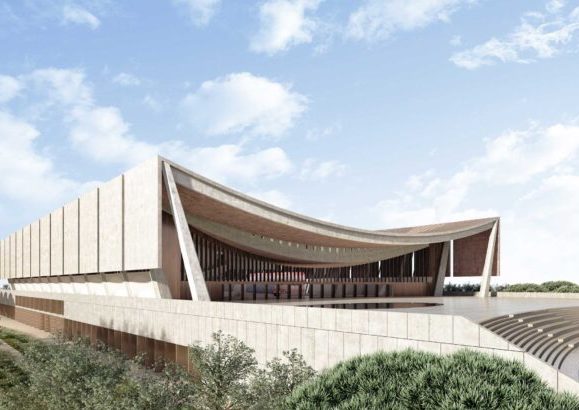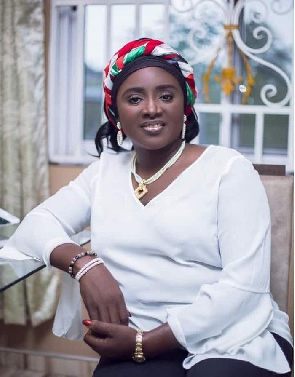Bright Simons throws 3 questions to government over National Cathedral project

Taking his turn on Joynews’ Newsfile program on Saturday, June 18, 2022, Bright Simons sought to understand among other things, why the government is prioritizing a cathedral at this point in time when citizens are suffering in many other more pressing areas in the country.
He put across some strong arguments under some thematic areas he believes government must respond to and clarify to all Ghanaians to promote accountability.
Here are 3 of them:
1. Why a cathedral if you are looking at things that will add value to the life of Ghanaians?
Under this, Bright Simons raised the point about the number of cathedrals and churches in Ghana as against other pertinent facilities or infrastructure needed across the country to improve the lives of citizens.
According to him, whilst it may be an important enough project for the government, the important question of its immediate significance or value vis a vis the enormous challenges facing Ghanaians nationwide.
“That is a question we don’t think the government has answered enough. Reason being that there are a lot of cathedrals in Ghana and per last count more than 120 cathedral-scale centres in Ghana – churches, temples or synagogues that are of the scale of a cathedral.
“So of the things that we don’t have, even if you agree that building the cathedral is a great thing in and of itself, you have to ask yourself whether you need another cathedral,” he said while speaking on Newsfile.
2. Is it really a National Cathedral or a National Interdenominational Church?
The Vice President of Imani Africa was emphatic when he said the government had gotten it wrong by describing the project as a National Cathedral.
Putting facts to back his argument, he questioned how a country without a national Bishop [which is typically the requirement for the establishment of any cathedral], is hoping to construct an edifice and call it a cathedral.
In his view, the idea should have been pitched as an interdenominational national church or ecumenical church.
“They are calling it a cathedral which I find very bizarre because a cathedral is a technical term. A cathedral is the seat of a Bishop,” he said.
“It is only those churches that have episcopal hierarchies, the Anglicans, Methodists, they use that term, for a very specific meaning. Typically, as a seat of a Diocesan Bishop…typically a metropolitan Bishop or Bishop of some high rank will be in the cathedral. Is the suggestion that we are going to have a national bishop? Because that is a very important point if we are going to try and convince people that this is a cathedral.
“So first of all, it is not a cathedral because we don’t accept given the context that any of the churches that are episcopal in the country have custodianship over the cathedral, it’s not the Catholics, Methodists or Anglicans. It’s supposed to be some form of ecumenical interdenominational centre,” he further added.
3. What about David Adjaye is making us pay him such a huge amount to design a project?
Bright Simons also raised questions about what informed the government’s decision to pay some over 20 million dollars to renowned architect, Sir David Adjaye for the purposes of designing the same.
According to him, the amount being charged by the architect is monstrous and it is even more surprising that the government is doling out that amount without first doing constructive analysis.
“…..“What is it about Sir David Adjaye that means that we must pay so much when the project scale is such that, typically, we need to be complying with guidance because it’s a big project so he’s making a lot of money,” he said.
“We are quite surprised to learn that a huge amount of money has been given to Sir David Adjaye upfront. On top of that, the amount of money he is charged, from the document we have now, about 22 million dollars which was nearly 10% of project cost was monstrous.
“Look at the median survey data. Sir David Adjaye’s studio is primarily UK-based. What you will realise is that as the scale of the project increases, the percentage decreases because it’s natural. That scaling dynamic means therefore that, they average percentage cost that you will typically find in the United Kingdom is about 3.5%.
“Here is the case we are paying Sir David Adjaye, almost 10 percent for this exercise that we are undertaking on behalf of the country and nobody doubts his competence nobody doubts his talent but this is inflationary pricing which we must talk about.
“If we were to bring it to Ghana we’d say okay he has a studio in the UK but now he is basing in Ghana, what is the Ghanaian guidance when it comes to architectural fees. Here also I find it shocking that we will be breaching the Ghana Institute of Architects fees structure which is around 4 percent,” he added.
Source: www.ghanaweb.com





